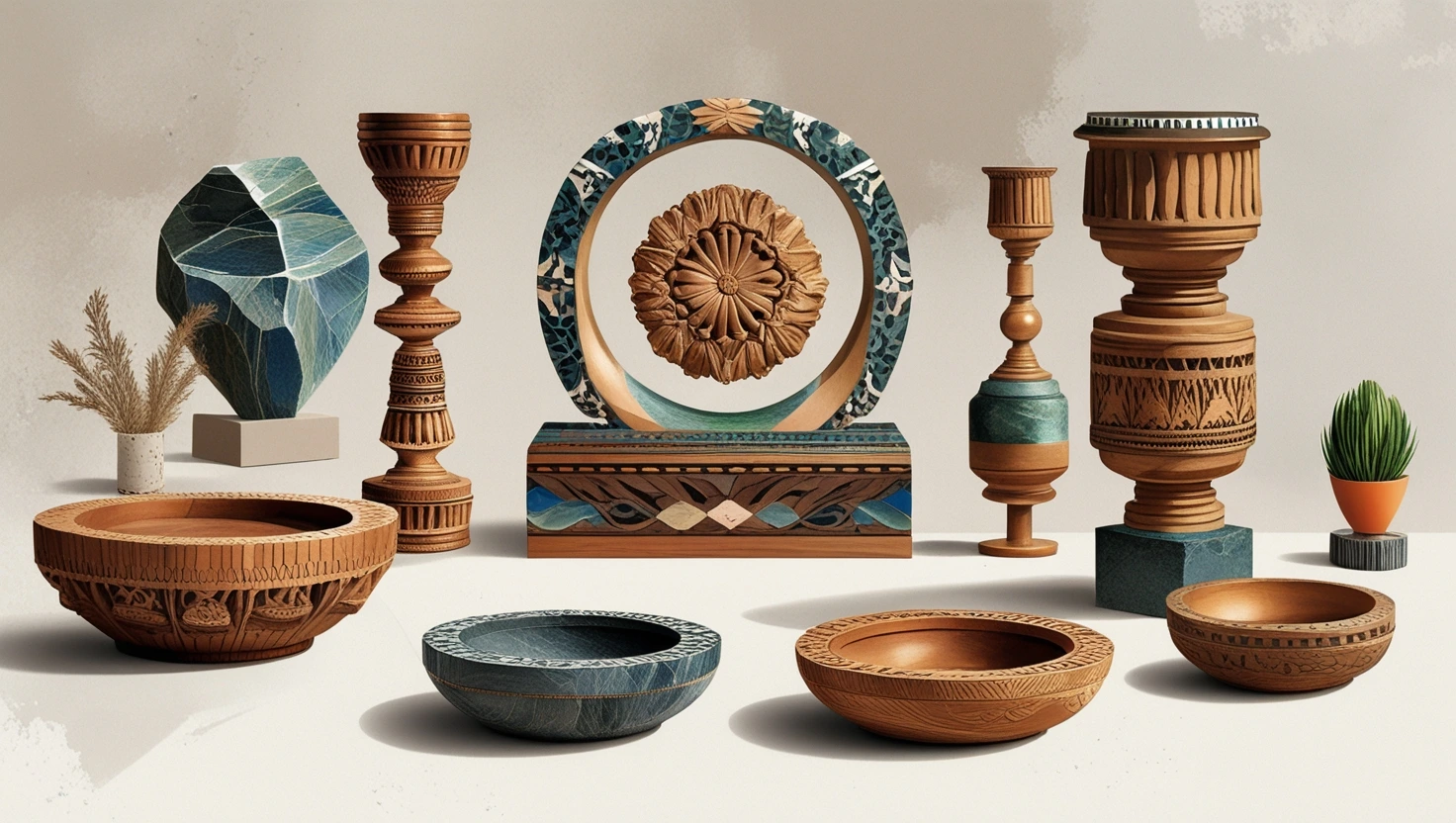

Art is not just created—it is passed down, reinterpreted, andreawakened. Across cultures, traditional craftsmanship has longserved as a living archive of identity, belief, and beauty. But in anera of speed and mass production, many of these art forms—oncetaught by touch, gesture, and years of devotion—are disappearinginto obscurity.
At Odditty, we believe these techniques aren’t relics. They’reseeds for new stories, waiting to evolve. This blog explores howadding a modern twist to ancient methods is not only saving crafttraditions but giving rise to entirely new creative expressions.
When we first traveled to meet stone carvers in Halebidu ormetalworkers in Bidar, one thing became clear: these were not hobbyists. These were keepers of legacy—masters of form, geometry,and symbolism. And yet, many sat idle in workshops emptied by a market that no longer knew how to value them.
Traditional skills like Bidri metalwork, wood inlay, or Hoysala-stylestone carving are vanishing—not for lack of beauty or relevance,but for lack of visibility. Their slow, methodical pace doesn’tmatch the rush of commercial production. The knowledge risks beinglost simply because it hasn’t found a place in the present.
Odditty is deeply committed to preserving artistic heritage. Bycollaborating with traditional artisans, the platform ensures thatancient techniques remain relevant in the modern world.
Hoysalastone carving is a centuries-old Indian art form celebrated for itsintricate detailing and architectural grandeur. We collaborate with master sculptors to create bespoke pieces, such as stone tables andsculptures, that blend this traditional technique with contemporaryaesthetics.
Bidriware,or metal casting from Bidar, is a time-honored craft known for its stunning inlay designs made with pure silver and alloys. Odditty works with artisans who specialize in this craft to produce exclusivedecor items, such as lamps and vases, that radiate elegance.
Wepartner with traditional weavers to create textiles that mergeheritage with modern design. These handwoven pieces, includingtapestries and cushion covers, use sustainable fibers like hemp andbanana.
Supporting Sustainability and Innovation
As environmental concerns grow, the art world is also adapting.Odditty champions sustainability by incorporating eco-consciousmaterials and methods into its production process.
Hempand banana fibers are revolutionizing the decor industry with theireco-friendly and durable properties. Hemp is naturally resistant topests, grows quickly, and requires minimal water, making it an idealmaterial for sustainable decor items like tapestries and lampshades.
Recycledaluminum and glass are essential to Odditty's mission of promotingsustainability. Aluminum is lightweight, durable, and infinitelyrecyclable, making it perfect for creating intricate frames and decoritems.
Traditionaldyes often contain chemicals that harm the environment. We opt forlow-impact, non-toxic dyes and paints that minimize pollution duringproduction.
Odditty’s commitment to sustainability not only reduces its carbonfootprint but also inspires other brands to follow suit. This createsa ripple effect, driving positive change across the design world.
Weuse packaging solutions that minimize waste while maintaining productsafety. Materials such as recycled cardboard, biodegradable wraps,and water-based adhesives ensure a smaller ecological footprint.
Byutilizing materials like plant-based composites, Odditty aims tocreate items that naturally decompose over time. These biodegradableproducts include vases, lamps, and textiles that combine style withenvironmental responsibility.
Advanced tools like 3D modeling, AR, and VR have transformed how artis conceptualized and created. Odditty leverages these technologiesto push the boundaries of design.
Technology like 3D modeling and augmented reality allows artists tobring their concepts to life with unprecedented accuracy. Instead ofrelying solely on sketches, creators can use software to visualizehow their designs will look in real-world settings.
Advancedtools such as laser cutting and 3D printing allow for intricatedesigns and precise manufacturing. Artists can offer customizations,tailoring pieces to individual customer preferences while maintaininghigh levels of detail and quality.
Withaccess to digital tools, artists can experiment with styles andmediums that were previously inaccessible. Virtual reality, forexample, enables immersive experiences, while generative art toolsinspire entirely new forms of creativity.
Through digital tools, Odditty connects artists with audiencesworldwide. This not only enhances visibility but also createsopportunities for cultural exchange.
Virtualtours allow customers to experience Odditty’s collections incurated spaces. Using interactive technology, shoppers can explorehow products look in various settings, such as modern living rooms ortraditional-themed interiors.
Odditty'sAR tools will let users superimpose decor items into their real-world environments using their smartphones. Whether it’s a lamp or a tapestry, customers can see how the product fits in their space,ensuring confident purchasing decisions and seamless integration into their homes.
Oursocial media presence highlights collaborations with digital artists.Platforms like Instagram and Pinterest showcase animated designs,motion graphics, and behind-the-scenes content that captivates andengages a broader audience.
At Odditty, we live in a space where old meets new, and where art doesn't belong in a gallery—but in your everyday life. By revitalising lost techniques with a modern lens, we’re not justpreserving craft—we’re launching it forward.
The future isn’t factory-made. It’s crafted, curated, andcourageously odd
